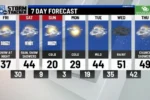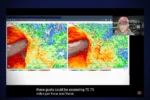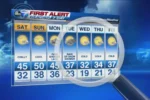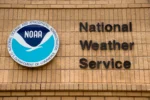Imagine walking into your classroom, ready to learn, but instead of feeling warm and cozy, you’re shivering because it’s only 52 degrees inside! This was the reality for students at Minneha Elementary in Wichita, Kansas. After a break for parent-teacher conferences and a chilly winter, students returned to school, only to find their classrooms colder than expected. The old heating systems just couldn’t keep up with the record-breaking cold temperatures. Let’s explore how these chilly classrooms can affect learning and what’s being done to warm things up for students!
| Category | Details |
|---|---|
| Location | Wichita, Kansas |
Challenges of Cold Weather in Schools
Cold weather can create big challenges for schools, especially when it comes to keeping classrooms warm. In Wichita, many schools had temperatures in classrooms as low as 52 degrees. This makes it hard for students to focus on their lessons. Schools are designed to be safe and comfortable, but when the heating system is old or not working well, it can lead to uncomfortable conditions for everyone.
Moreover, when temperatures drop significantly, schools may have to close or limit activities. For example, Wichita Public Schools had to keep some students at home due to extreme cold. When kids cannot learn in a proper environment, it can lead to what teachers call ‘learning loss.’ That’s why keeping classrooms warm is so important for students’ success.
The Importance of a Warm Learning Environment
A warm classroom is crucial for students to learn effectively. When classrooms are cold, students might wear heavy coats, which can be distracting and uncomfortable. Principal Cynthia Chrisman from Minneha Elementary explained that when kids are cold, they cannot concentrate and learn well. This shows how important it is for schools to ensure a comfortable temperature for all students.
Furthermore, a comfortable learning environment helps students feel relaxed and ready to engage with their lessons. As temperatures are expected to rise in the coming days, teachers hope to take students outside for recess. Outdoor play is a great way for children to stay active and socialize, which is also vital for their overall development.
Solutions for Improving School Heating Systems
To solve the problem of cold classrooms, schools need to invest in better heating systems. This means updating old equipment and fixing issues like leaks and poor insulation. By doing this, schools can provide a warm and cozy space for students to learn. Luke Newman, the WPS Director of Facilities, mentioned that many buildings are old, which makes it harder to keep them warm.
Additionally, community support is essential for these improvements. Parents, teachers, and local leaders can work together to advocate for better funding and resources. When everyone pitches in, schools can create a better learning environment for students. It’s important to remember that every child deserves a comfortable place to learn and grow.
The Impact of Cold Weather on Learning
Cold weather can significantly hinder the learning process for students, as evidenced by the recent challenges faced by Wichita Public Schools. With classrooms registering temperatures between 52 and 53 degrees, students are forced to wear coats indoors, which can detract from their focus and comfort. Principal Cynthia Chrisman emphasized that comfort is crucial for effective learning; when students are cold, their ability to concentrate and absorb information diminishes, leading to potential learning loss.
Moreover, the psychological effects of extreme cold on students cannot be overlooked. Children may feel lethargic or unmotivated when learning in an uncomfortable environment. This situation is further exacerbated when they are unable to participate in outdoor activities, which are essential for their physical and mental well-being. Schools must find ways to maintain a conducive learning atmosphere, especially during severe weather, to ensure that their educational objectives are met.
Frequently Asked Questions
Why did Wichita Public School students miss class recently?
Wichita students missed class due to **parent-teacher conferences**, **President’s Day**, and very **cold weather**. This caused schools to close because the buildings were too cold for classes.
What was the temperature like in Wichita classrooms?
The classrooms were very cold, with temperatures only reaching **52 to 53 degrees**. This is much lower than the comfortable **70 degrees** needed for students to learn well.
What problems did the old school buildings have?
The old school buildings had issues like **poor insulation** and **leaks**. This made it hard for the **heating systems** to keep the classrooms warm during the record-setting cold.
How did the cold weather affect students’ learning?
Cold weather can lead to **learning loss**. When students are cold, they find it hard to focus and learn, which is why they wore **coats** in class.
What did the Principal say about students learning in cold temperatures?
Principal Cynthia Chrisman mentioned that when kids are cold, they can’t learn well. She highlighted that it’s uncomfortable for students to wear coats while trying to focus in class.
What activities did students have during the cold weather?
During the cold weather, students at **Minneha Elementary** had **indoor recess**. This means they stayed inside to play instead of going outside in the cold.
What are schools hoping for next week regarding the weather?
Schools are hoping that next week, temperatures will rise to the **50s and 60s**. This would allow students to go outside for recess instead of staying indoors.
Summary
The content discusses the resumption of classes for Wichita Public School students, excluding some Pre-K programs, due to extreme cold temperatures affecting classroom conditions. With indoor temperatures reportedly between 52 and 53 degrees, the aging buildings and heating systems struggled to maintain adequate warmth, leading to concerns about learning loss. Principal Cynthia Chrisman emphasized the discomfort caused by the cold, as students attended classes wearing coats. Despite these challenges, staff are hopeful for improved weather next week, allowing outdoor activities as temperatures are expected to rise into the 50s and 60s.







